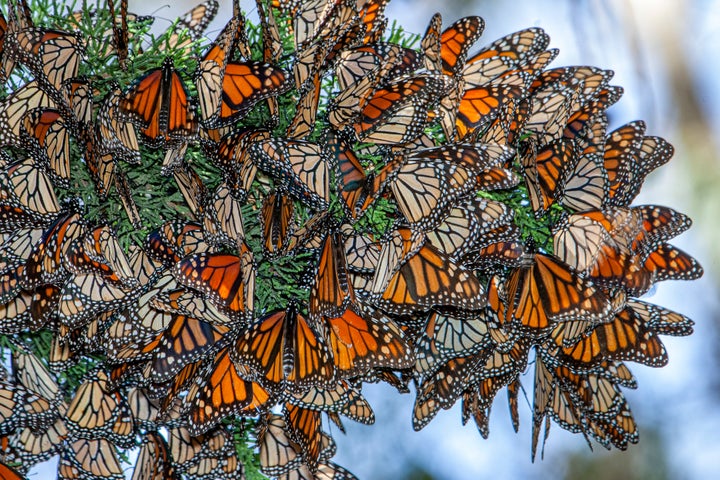If you’re running out of socially distanced activities to occupy your time as the nation waits for COVID-19 vaccines to be distributed to the masses, there may be a solution ― butterfly spotting.
Researchers are looking for people in Alabama, Florida, Georgia, Louisiana, Mississippi, North Carolina, South Carolina and Texas to help them pinpoint monarch butterflies overwintering in their states from December through March.
Thousands of eastern monarchs in the U.S. and Canada migrate south each fall to spend the winter in Mexico. But not all of them go all the way to Mexico, and researchers want to know exactly where in the southern United States those butterflies spend the winter. (There is also a western monarch population that overwinters in California, but this project is about their eastern cousins.)
“If we can determine locations in this country that are important to the species, we may be able to focus our efforts to help maintain those areas,” Anna Yellin, a wildlife biologist with Georgia’s Department of Natural Resources, told HuffPost in an email.
That could mean protecting specific kinds of habitat or making sure there are adequate food sources nearby.

The initiative is a collaborative project between Georgia’s DNR, citizen science program Journey North, Monarchs Across Georgia and the University of Georgia.
This week, federal officials announced that the monarch butterfly was a candidate for Endangered Species Act protections, but that it likely would not be added to the list for several years because there are so many other species waiting for a designation. Both western and eastern monarch populations have seen huge decreases over the past few decades ― with eastern monarchs declining about 80% and western monarchs 99%.
Yellin, speaking about the declines as they relate to the eastern population, said there have been many factors involved.
“These include habitat loss (due to herbicide use and reduction in larval food or nectar sources, and wildfires), insecticide use, disease, and logging in their overwintering areas (mountainous areas of Mexico),” she said. “We also need to worry about how climate change may impact the microclimates in the areas that monarchs currently overwinter in.”
Researchers want the general public’s help so they can get observations from as many people as possible.
“What we need for this project is to have the most eyes we can looking into fields, forests, and wherever else overwintering monarchs may be,” she said. “At this point, we do not know if we will find them overwintering in Georgia, or in other yet unidentified locations in Southeastern states.”
She added that spotting winter butterflies could prove tricky.
“Butterflies are small and may cluster high in trees and blend in when they are overwintering,” she said. “They may be hard to spot and distinguish from leaves or pine needles. When overwintering, most of the time they may not be moving at all, but a hiker might get lucky and see them.”
Those who want to participate in the project can do so by reporting their sightings ― which requires creating a free account ― at the Journey North website.
